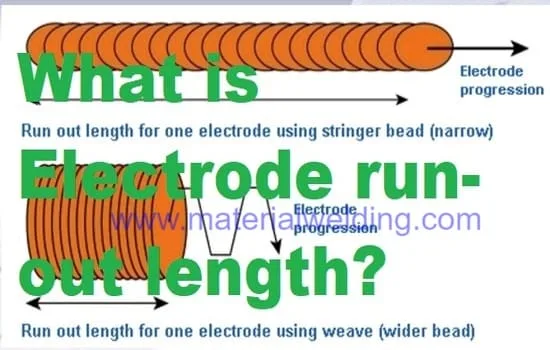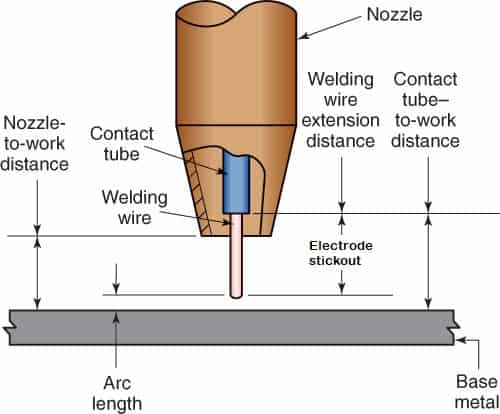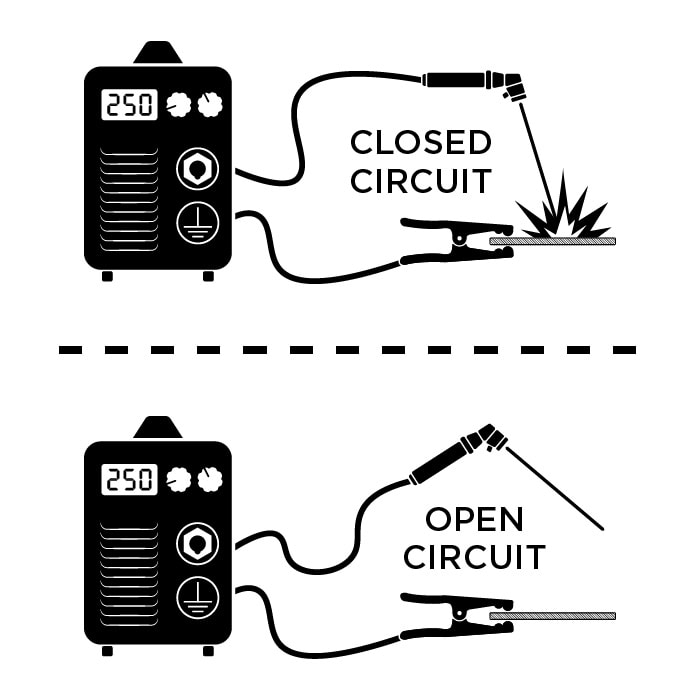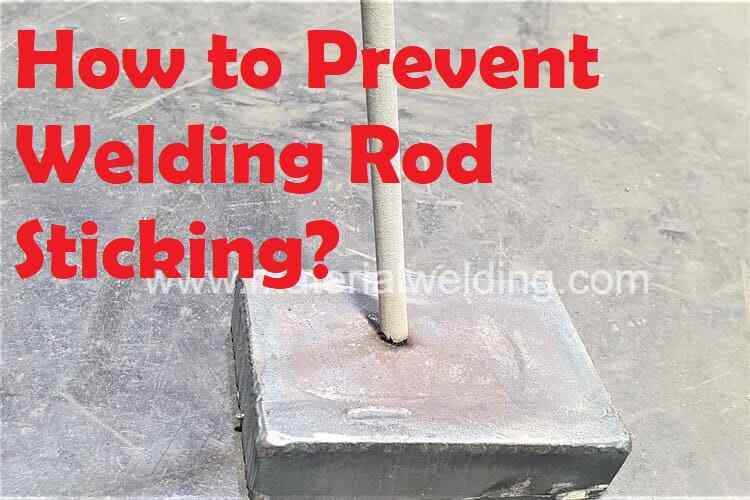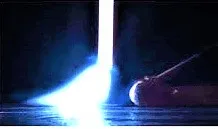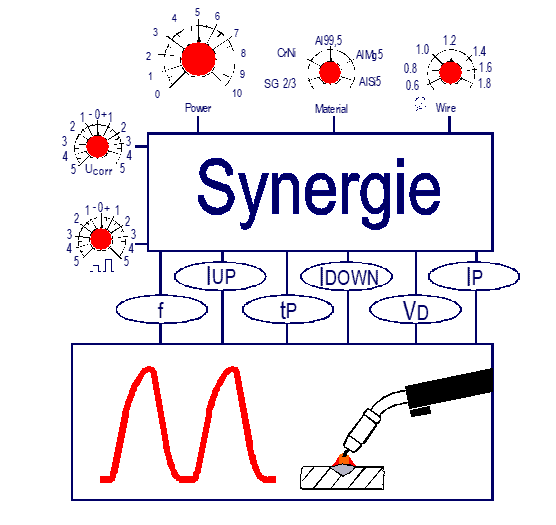What is Arc Length in Welding?
Arc length in welding is the distance between the tip of the welding gun and the surface of whatever material is being welded.
It is one of many parameters that a welder must consider when setting up their machine, as it affects how well current can be transferred from the gun to the workpiece.
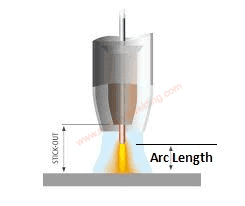
Too short an arc length will cause difficulty with starting and maintaining a consistent arc, while too long an arc length can result in excessive spatter and poor weld quality.
What is Welding Arc?
An arc is an electrical discharge between two electrons that is caused by ionization at high voltage and current density.
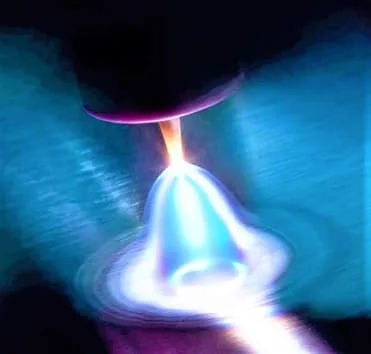
Due to a gas discharge, a plasma is formed through which electricity flows continuously. The discharge appears as a glaring, arc-shaped light, hence the arc got its name.
The gas in the plasma reaches temperatures of 5000 to 7300 Kelvin, with so-called high-current arcs even up to 50 000 Kelvin, which is the equivalent of around 49 727 °C.
The arc required for welding is an electrical discharge between the welding electrode and the workpiece. The arc is generated when a sufficiently large voltage pulse (trigger ignition) is developed between the workpieces, or the welding electrode is tapped onto the material to be welded (contact ignition).
The arc is the basis of arc welding. It welds the starting material and the filler material, whereby the weld seam is produced.
Here, the voltage discharges like a lightning strike, allowing electricity to flow through an air gap, resulting in the creation of an arc that has a temperature of several thousand degrees Celsius, at a maximum of 10,000 degrees Celsius (18,000 degrees Fahrenheit).
Via the welding power supply, a continuous current is formed through the welding electrode to the workpiece and for this reason, the workpiece must be grounded via a grounding cable in the welding machine before the welding process is started.
What is the normal arc length in welding?
The ideal arc length for welding will depend on several factors such as the type of material being welded, the type of electrode being used, amperage settings, and welding position.
Generally speaking, most materials require an arc length between 1/8 inch to 1/4 inch for manual welding processes like gas metal arc (GMAW) or flux-cored arc (FCAW).
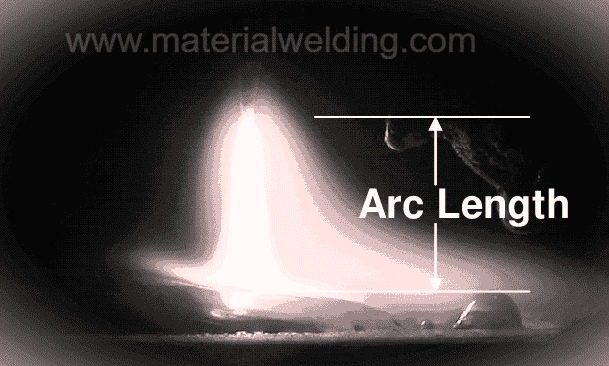
A short arc length can be used but this increases the chance of the electrode sticking to the job, especially when using TIG Welding or Stick welding.
What determines arc length in welding?
Arc length is an important factor in welding, as it impacts weld quality, power efficiency, and safety.
Arc length refers to the distance between the tip of the electrode and the base metal surface. It is measured in millimeters (mm) or inches (in) as discussed earlier.
This arc length can be adjusted by changing variables such as voltage, and current, as well as using the latest electronic welding machines.
The voltage used for welding has a large impact on the arc length; higher volts will produce a longer arc while lower voltages will produce shorter arcs.
The current also plays a role; if you increase your amperage when using a constant voltage setting, you can decrease your arc length significantly.
Simply put forward:
- Rise in voltage: Rise in arc length,
- Rise in amperage: Decrease in arc length.
What is arc length in mig welding?
Arc length in mig welding usually ranged from 2 mm to 4 mm or 1/16-inches to 1/32 inches.
Arc length in mig welding critical variable in welding because it affects both penetration and bead profile. Mode of metal transfer also affects the arc length in MIG welding.
Read more: Metal transfer modes in MIG welding.
Maintaining proper arc length can help produce an even, consistent weld that is strong and free from defects.
Welding amperage and voltage have the profound effect on the arc length in MIG welding as explained above.
